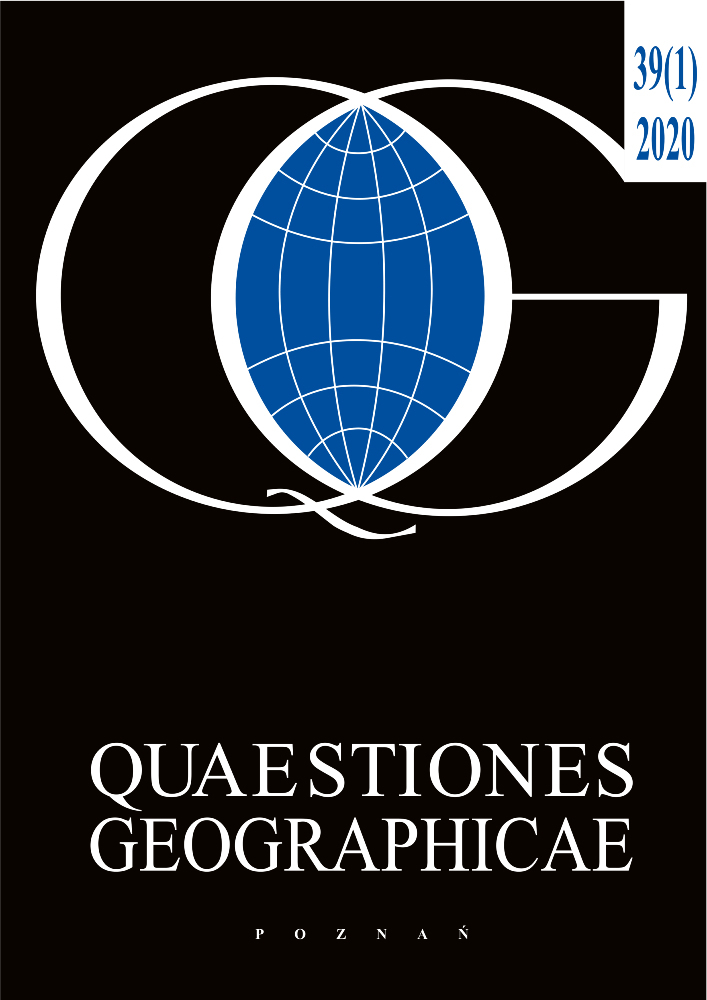Abstract
This investigation additionally recognizes partner cooperation issue and furthermore to moderate the real issue through subjective and quantitative appraisal of riverine wetland. Considering a floodplain wetland in rustic West Bengal, the concentration was extended to perceive the type of wetland capacities as per the idea of individuals’ contribution by group examination. Be that as it may, NDVI was connected to ponder the total weeds condition into the wetland to decide the connection between Water Quality Index (WQI) with Normalized Difference Vegatation Index (NDVI) and its impact on valuation. In ANOVA, which is computed by MINITAB programming, centrality level was lower than 0.05 for each case.
Funding
Authors are highly indebted to UGC, Goverment of India for giving financial assistance. Authors are highly acknowledged the UGC, Goverment of India for awarding the valuable UGC Major Research Project and also helps obtained from all investigators with particularly from School of Water Resources Engineering, Jadavpur University and GCBT, College, Habra are grateful acknowledged.
References
Adhikari B., Di Falco S., Lovett J.C., 2004. Household characteristics and forest dependency: Evidence from common property forest management in Nepal. Ecological Economics 48 (2): 245–257. Doi: 10.1016/j.ecolecon.2003.08.008.
Aktar W.Md., Sengupta D., Chowdhury A., 2009. Impact of pesticides use in agriculture: their benefits and hazards. Interdisciplinary Toxiology 2(1): 1–12. Doi: 10.2478/ v10102-009-0001-7.
Anderson J., Clement J. Crowder L.V., 1998. Accommodating conflicting interests in forestry: Concepts emerging from pluralism. Unasylva 49 (194): 3–10.
Bhattacharya A., Satpathy K.K., Prasad M.V.R., Canario J., Chatterjee M., Sarkar S.K., Branco V., Bhattacharya B., Bandyopadhyay A.K., Alam Md. Aftab., 2008. Geochemistry of major and trace elements in core sediments of Sunderban Delta, India. In: An assessment of metal pollution using atomic absorption spectrometer and inductively coupled plasms mass spectrometry, M.L.Sánchez (ed.), Causes and Effects of Heavy Metal Pollution, NOVA Science Publishers, Hauppauge: 305–340.
Biswas M., Bandyopadhyay S., Roy P.K., Mazumder A., 2005. A holistic approach of participatory management of wetland: BhomraBeel: A case study. Journal of Public Health Engineers (4): 37–41.
Biswas Roy M., Chatterjee D., Roy P.K., Mazumdar A., 2015. Wetland conservation, management and community education – a review of published paper of 1995–2014. Ecology, Environment and Conservation 21 (4): 1769–1777.
Biswas Roy M., Roy P.K., Samal N.R. , Mazumdar A., 2016. A Comparative Study of Labour Participation in Three Wetland Regions of West Bengal, India. Journal of the Institution of Engineers (Series A): 1–10. Doi:10.1007/s40030- 016-0150-6.
Biswas Roy M., Roy P.K., Samal N.R., Mazumdar A., 2012. Socio-economic Valuations of Wetland Based Occupations of Lower Gangetic Basin through Participatory Approach. Environment and Natural Resources Research 2(4): 30–40.
Biswas Roy M., Samal N.R., Roy P.K., Mazumdar A., 2010. Human wetland dependency and socio-economic evaluation of wetland functions through participatory approach in rural India. Water Science and Engineering 3(4): 467–479.
Biswas Roy, M., Chatterjee D., Mukherjee T., Roy P.K., 2016. Environmental threat to wetland Bio-diversity on migratory bird: a case study Ofperi-urban area of West Bengal. Asian journal of current research 1(1): 30–38.
Boyer T., Polasky S., 2004. Valuing urban wetlands: A review of non-market valuation studies. Wetlands 24 (4): 744–755. Doi:10.1672/0277-5212(2004)024[0744:VUWARO]2.0. CO;2.
Haq A.H.M.R., Ghosh P., Islam M.A., 2005. Wise use of wetland for sustainable livelihood through participatory approach: A case of adapting to climate change. Asian Wetland Symposium (AWS), Bhubaneswar.
Horton R.K., 1965. An index number system for rating water quality. Journal-Water Pollution Control Federation 37: 300–305.
Jena V., Dixit S., Gupta S., 2013. Assessment of Water Quality Index of Industrial Area Surface Water Sample. International Journal Of Chemical, Technology And Research 5(1): 278–283.
Kangalawe R.Y.M., Liwenga E.T., 2005. Livelihood in the wetlands of Kilombero Valley in Tanzania: Opportunities and challenges to integrated water resource management. Physics and Chemistry of the Earth 30 (11–16): 968–975. Doi:10.1016/j.pce.2005.08.044.
Lancer L, Karke K., 2002. Aquatic weeds and their management. Report of International Commisions of Irrigation and Drainage, New Delhi, India.
Md H.A., Alobaidy J., Abid S.H., Maulood K.B., 2010. Application of Water Quality Index for Assessment of Dokan Lake Ecosystem, Kurdistan, Iraq. Journal Of Water Resource And Protection 2: 792–798.
Pal J., Pal M., Roy K.P., Mazumdar A., 2016. Water Quality Index for Assessment of Rudrasagar Lake Ecosystem, India. Journal Of Engineering Research and Application 6(12): 98–101.
Pal M., Samal R.N., Biswas Roy M., Roy P.K., 2015. Water Quality Index as a Reliable Indicator of Water Pollution Level-A Case Study of Rudrasagar Lake, Tripura. International Journal of Innovative Research in Science,Engineering and Technology 4(8): August 2015.
Pathak K.S., Prasad S., Pathak T., 2015. Determination of Water Quality Index River Bhagirathi in Uttarkashi, Uttarkhanda,India. International Journal Of Research Granthaalaya 3(9): 1–7.
Puri J.P., Yenkie N.K.M., San Gal P.S., Gandhara V.N., Sarote B.G., Dhanorkar B.D., 2011. Surface Water (Lakes) Quality Assessment in Nagpur City (India) Based on Water Quality Index (WQI). Rasayan Journal of Chemistry 4(1): 43–48.
Shivhare S., Bhadoriya A.K.S., 2012. Study on aquatic plants and their chemical properties. International Journal of Research in Engineering & Applied Sciences 2(2): 1832–1840.
Timmons F.L., 2005. A history of weed control in United States and Canada. Weed Science 53: 748–761.
Yogendra K., Puttaiah T.E., 2008. Determination of Water Quality Index and Suitability of an Urban Water Body in Shimoga Town, Karnatoka. The 12th World Lake Conferances: 342–346.

